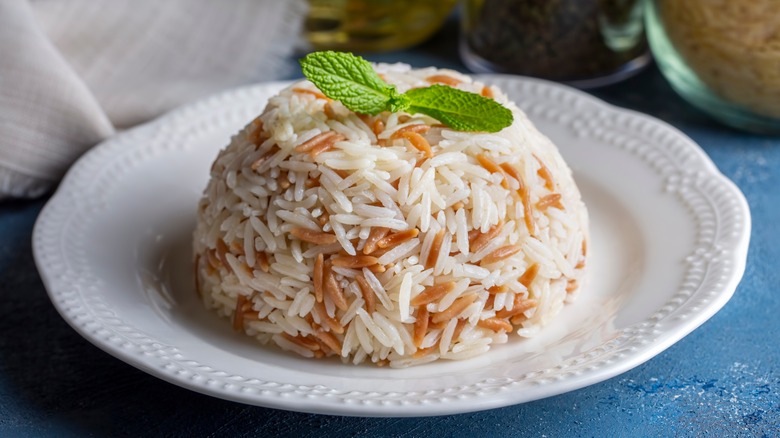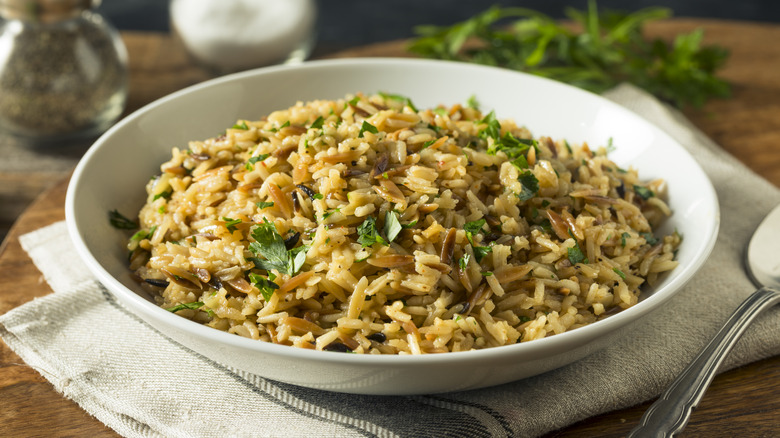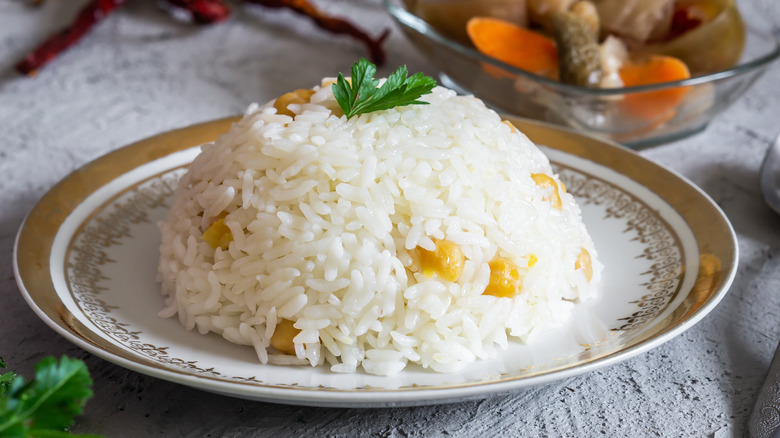The Biggest Mistake To Avoid When Making Rice Pilaf From Scratch
Though there's no shortage of starches out there, one of the most common is rice, and there's perhaps no rice dish more ubiquitous than rice pilaf. This isn't a specific type of rice, and it isn't just rice that's served in a ball shape — it's a dish with its own rich history. There are many versions of rice pilaf in the world, but they all share the same basic principle: sautéing rice in some sort of broth or stock rather than water, imparting flavor as the grain cooks.
This may sound simple, and rice pilaf certainly isn't difficult for home cooks to make (hence why it's so popular around the globe), but it does come with pitfalls to avoid. Fortunately, Jenn Segal, chef, blogger, and author of the cookbook "Once Upon a Chef," gave us some advice for how to get rice pilaf right. This advice boiled down to one thing: Aim for the right texture. There are three keys to achieving this goal, each of which occurs at a different stage of the cooking process: rinse, don't over-stir, and rest. In fact, stirring too much is perhaps the biggest rice pilaf mistake you can make.
Rinsing and not over-stirring are both crucial for great rice pilaf
The key to rice pilaf is realizing that the rice isn't supposed to stick together; that stickiness is an integral part of risotto Milanese, for example, but it's not part of this dish. Jenn Segal's advice for achieving the right rice pilaf texture involves taking your time and not skipping any steps. First, make sure you rinse your rice before cooking it. "Rinsing removes the excess starch, which helps the rice cook up fluffy and not sticky," she told Daily Meal.
Completing this step is simple: Just place your rice in a bowl, cover it with water, swirl it around until the water gets cloudy, dump out the water (but not the rice), and repeat the process until the water stays clear. This process takes longer than just dumping the rice into a pot, but the end result speaks for itself, texture-wise.
Segal's next bit of advice comes during the cooking process itself: Don't stir the rice too much. Over-stirring can make rice mushy, and while that wouldn't be so bad in a dish like rice pudding, it's definitely not what you want from rice pilaf. So, leave the rice alone and let it do its thing.
Resting your rice pilaf ensures that it will end up soft and moist
You don't want to skip the last step of the process after your rice is cooked: resting. We often think of resting as a process reserved for meat — virtually any chef could tell you how to rest your steak and why it's so important. But resting benefits a lot more dishes than just proteins, and rice pilaf is one of them.
"Letting it sit for a few minutes with the lid on allows the steam to finish cooking the rice and helps it absorb any remaining moisture," Jenn Segal told Daily Meal. Since you want your rice to soak up as much moisture as possible, this is crucial — and it doesn't require any additional effort beyond leaving the pot alone for a bit.
Used in conjunction, these steps will give your rice pilaf that perfect amount of moisture with no stickiness. Adding these steps to the process may take a little more time than you're used to, but that time will be well worth it.


